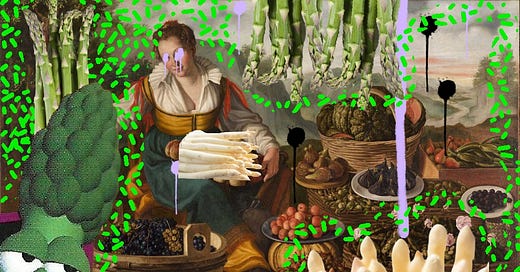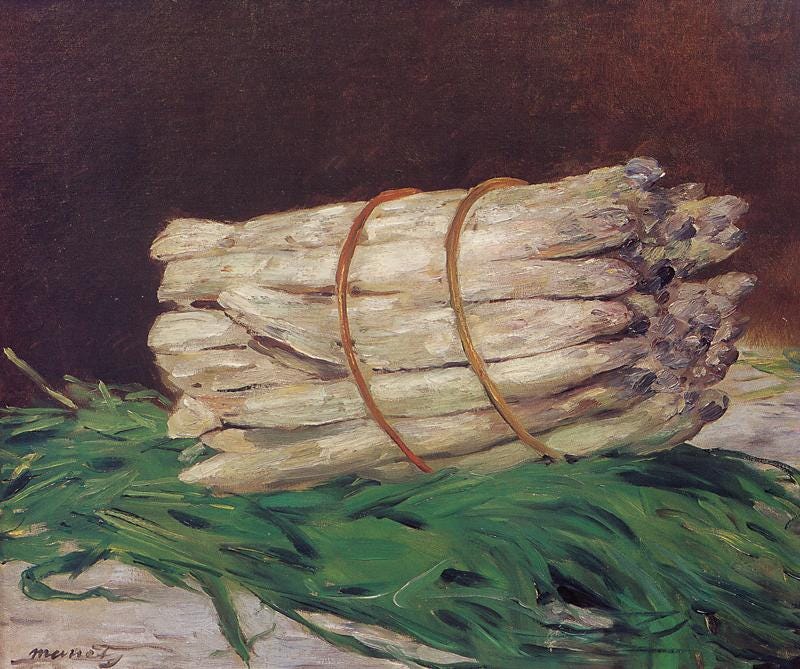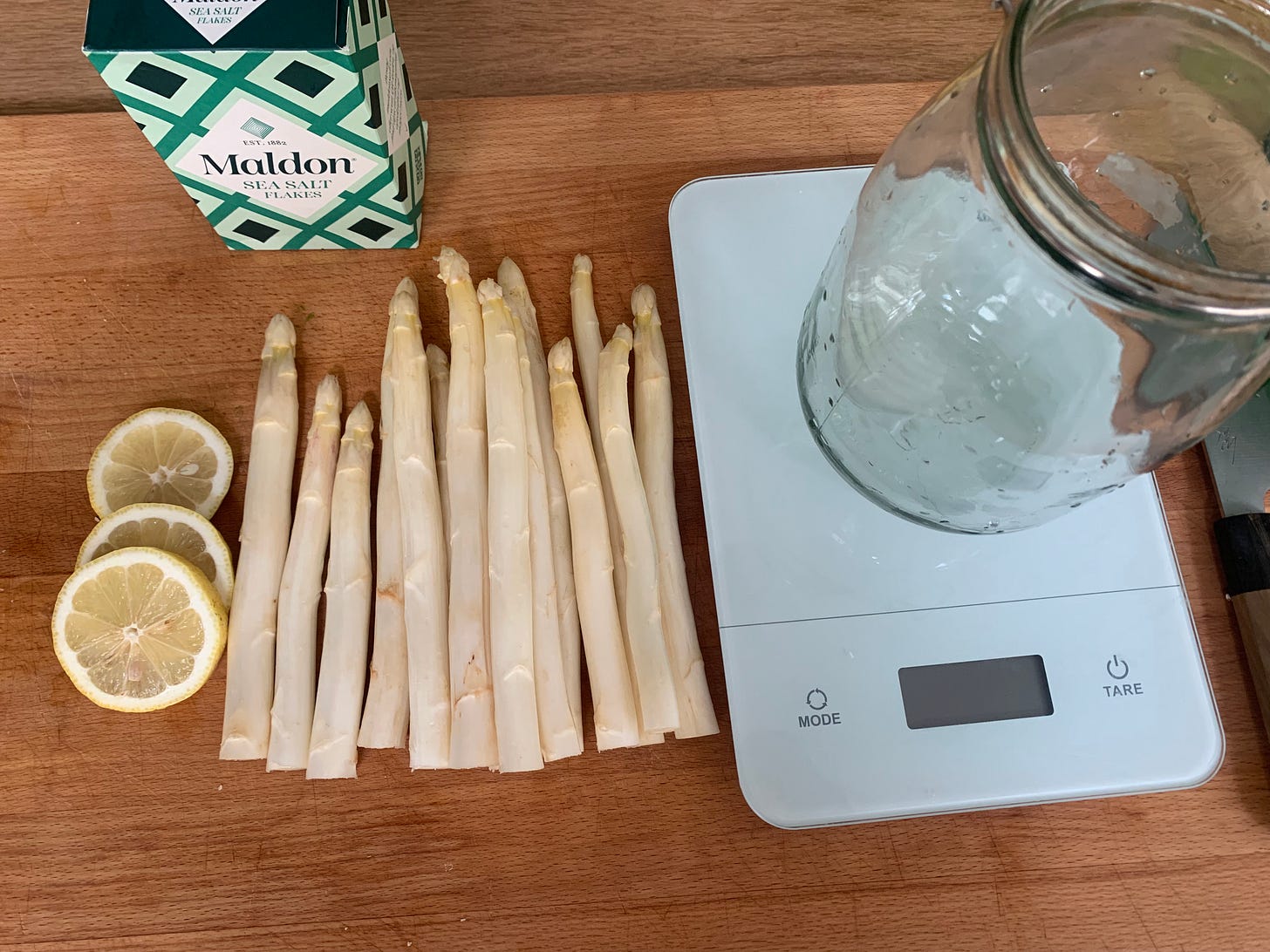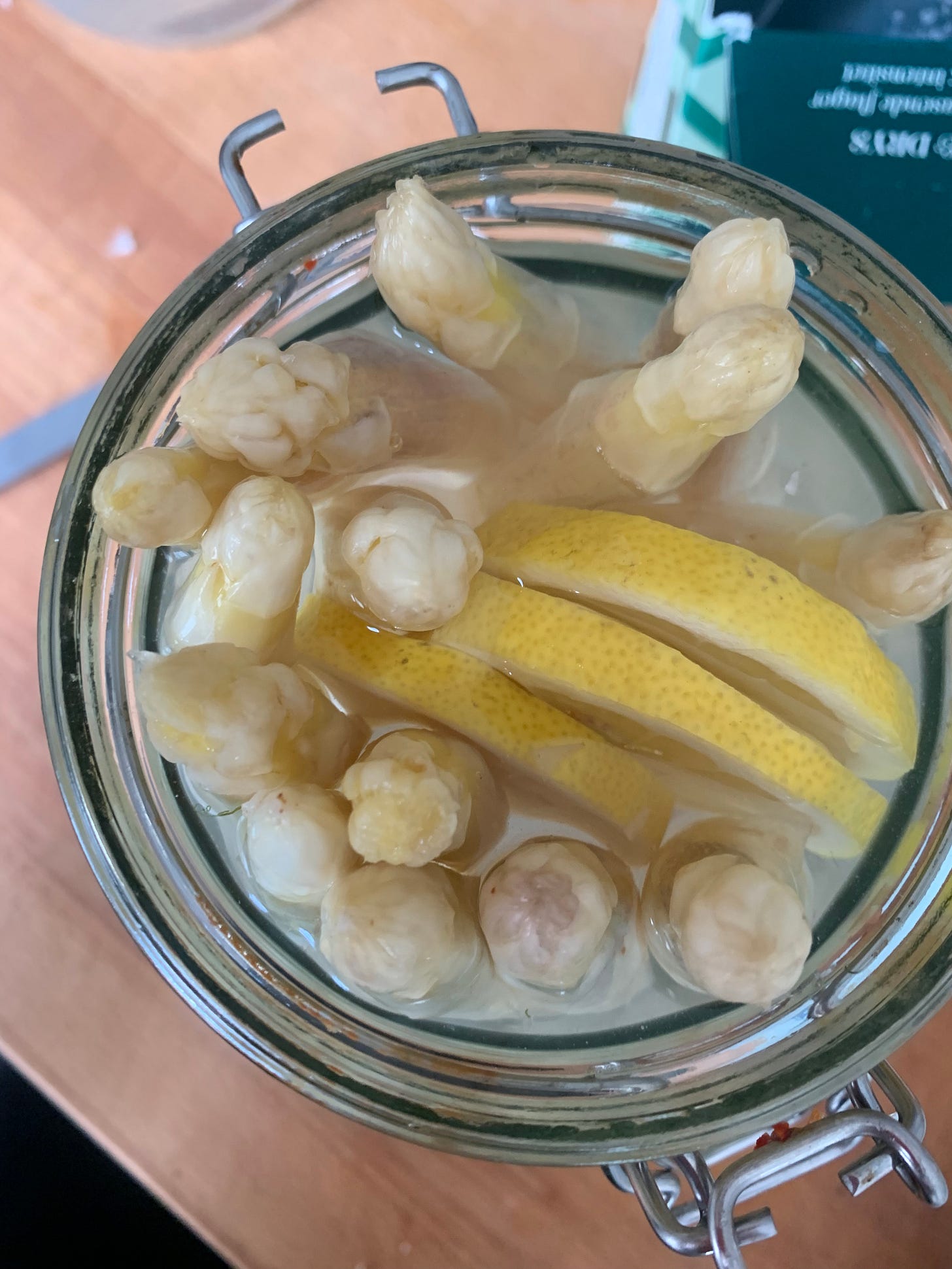On white asparagus
Asparagus brotherhood, asparagus art, asparagus lacto-fermented. Thank you asparagus.
Hello. I am back from my three week sabbatical. I was on holiday and I did not want to do anything :) Nevertheless, I am back and ready to party. She’s got lots of things coming up on the menu so hold on tight.
You know what true innovation is? White asparagus. Most people think white asparagus is connected to the widely known green asparagus. But they are the same thing. White asparagus can easily become green but green asparagus cannot become white. The big difference is green asparagus gets to photosynthesize while white asparagus does not. Meaning white asparagus does not see the light of day.
While different in color, they also differ in taste. Since green asparagus gets to see the sun, there is a higher nutrient content and a grassier taste that we all know and love about asparagus. White asparagus, on the other hand, is a lot more subtle and crunchier than you are expecting. It is more thick and fibrous than green asparagus i.e. perfect for fermenting. The biggest downside: you have to peel them- but really, who cares?
How was white asparagus discovered??
Since the only difference between white and green asparagus is the growing method, how did people know that shielding asparagus from the sun turns it white? Why would we try hiding vegetables from the sun during the growing season? Like most discoveries, it was a complete accident. White asparagus first revealed itself in the 17th century in France when farmers thought to plant asparagus roots deep in the ground surrounding the growth with soil, essentially underground. As they grew to the top, the farmers must have thought: putain merde c’est blanc. Holy shit it’s white.
Then enters white asparagus in Europe. Like most random culinary discoveries at the time, they became a delicacy. A sign of wealth and elitism. Turns out white asparagus is still expensive. And to make matters better, the white asparagus season is the shortest of them all. The window of opportunity is dominated by restaurants and high-end grocery stores before the common girl (me) can get her hands on them. This reason alone renders the white asparagus an ideal candidate for fermenting. By waiting for the end of the season when prices are lower, it's easy to buy a larger quantity for fermenting. Doing so means we prolong its presence in our life and boost the flavor and texture along the way.
Enters asparagus art
Something about food art. Asparagus art. One way to measure the profundity of various foods throughout time is how often we see them created and recreated. The white asparagus is no exception to this thought. As it remains at a divine level of worship in the vegetable kingdom. She’s been it.

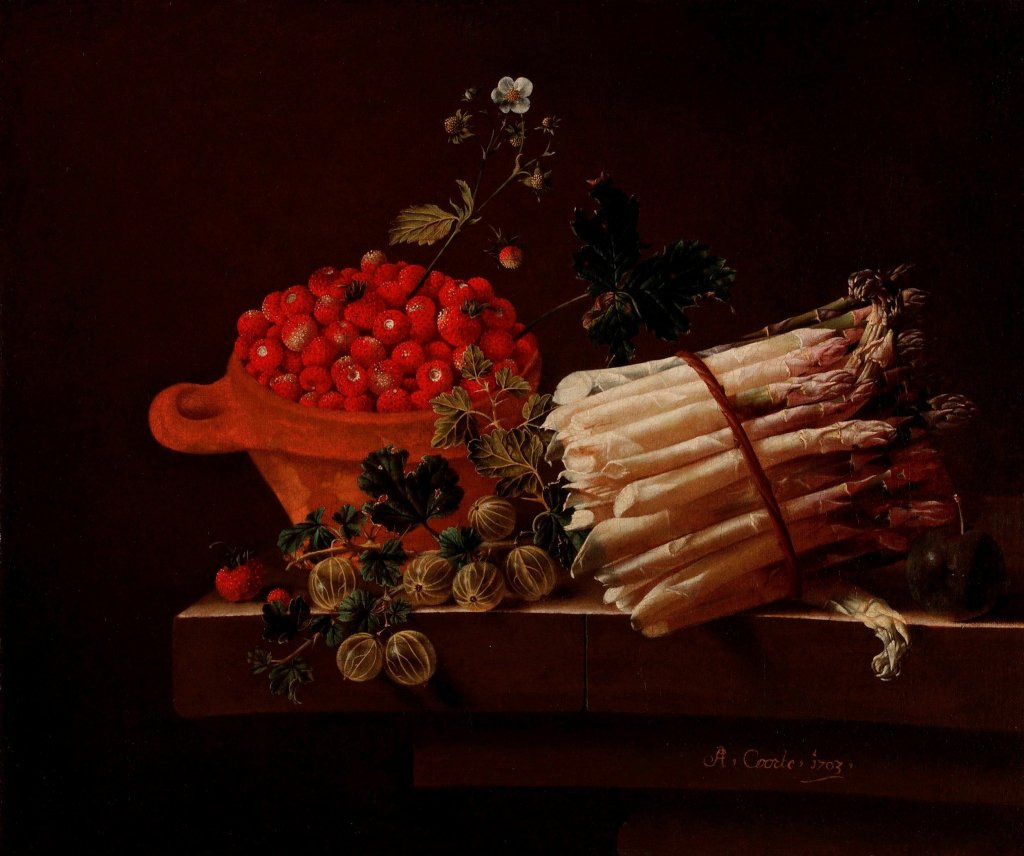
The Brotherhood of Asparagus
It turns out there is an exclusive club in the Rhine River valley where tasting, growing, and ones cooking skills of white asparagus are prime requirements for membership. The club is made up of farmers, chefs, and other professionals dedicated to the tradition of white asparagus. To demonstrate their expertise, they must be able to distinguish white asparagus harvested in the morning vs. those harvested in the afternoon. Respect.
What did you expect an asparagus field to look like?
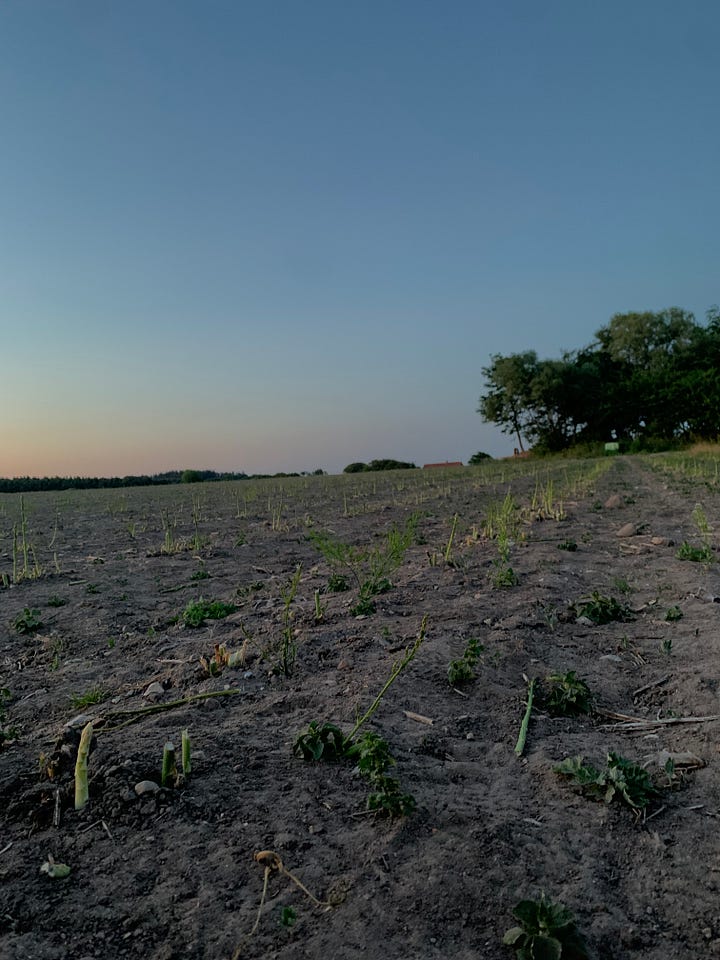
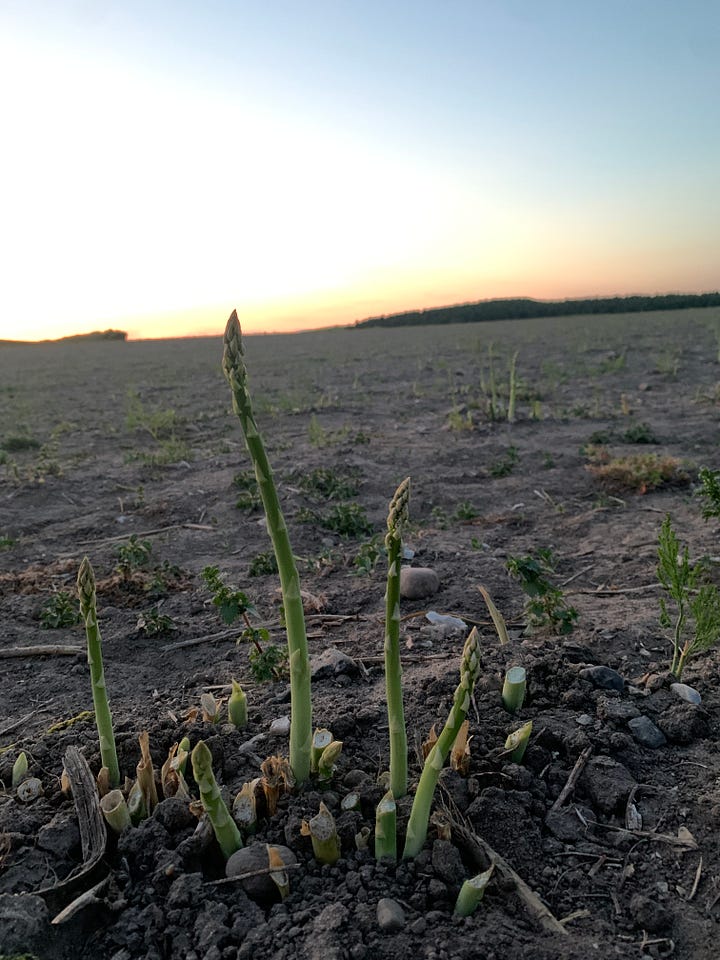
A couple weeks ago, I visited the island of Samsø and saw my first-ever asparagus farm. At first, the farm looked like any old empty field of dirt. But as I looked closer under the influence of too much wine, I realized these little sticks were popping out of the ground like fingers pointing up at the sky. One would barely notice them upon passing by. But those tiny little sticks are asparagus (asparagi?). An entire field of them.
I do not know what I expected. Maybe some leaves or flowers are attached to the fruiting bodies like how most vegetables and fruits grow. But asparagus just is. It just does. Upon discovering this I learned asparagus falls under the stem family of vegetables. Meaning they have stems or stalks that can be consumed. Other esteemed members include leeks, fennel, rhubarb, and chard. A very exclusive family.
Asparagus recipes
White asparagus and morel sauce
White asparagus and porcini salad
Asparagus, butter beans, meyer lemon, and green onion by Pierce Abernathy
On fermenting white asparagus

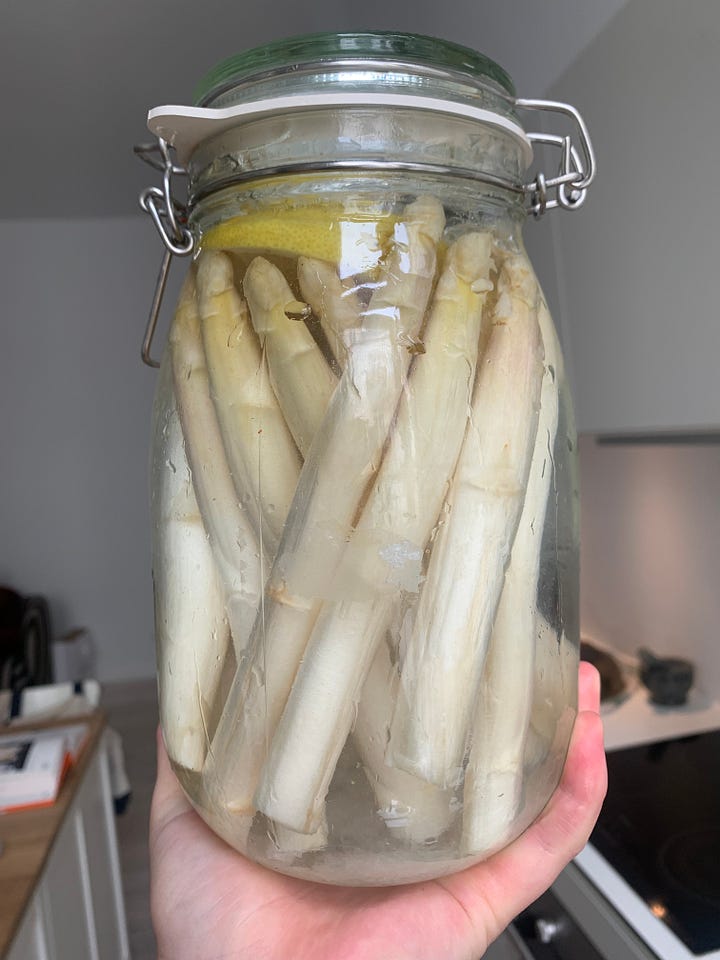
Ingredients
White asparagus
Salt
Water
lemon
Directions
Put the white asparagus into a wide mouth jar and cover with water. Keep note of how much water you add to the jar as you’ll be making a 3% brine solution. Meaning that 3% of the weight in water is how much salt you will add.
Add the salt. Remember, you’re making a 3% brine solution. 3% of the weight in water is how much salt you use. If you use 1000g/1 liter of water, you need 30 grams of salt. With a spoon stir the salt until it dissolves.
Add the lemon slices. You don’t technically need lemon, but why not? You like flavor..no?
Add a weight to keep all the asparagus and lemon submerged. Asparagus likes to float. I like to put a rock in a plastic bag with a little bit of water. I keep this makeshift weight at the top of the jar to ensure no air can penetrate the asparagus. Remember mold can’t grow without oxygen!!
Keep in a warm/room temperature environment for a week and move to the fridge. The time frame differs for everyone as all of our kitchens have unique microclimates that can affect the speed of fermentation at varying rates. So keep an eye on it and taste often.
OBS!!!
All ferments should be moved to the fridge after the first week or so of fermentation as colder environments slow microbial growth. When ferments are kept too warm for too long, they will sour quicker. In general, microbes enjoy a slow and steady life cycle. Moving your ferments to the fridge ensures this and also ensures more flavor and fun for you :)
~fin~

